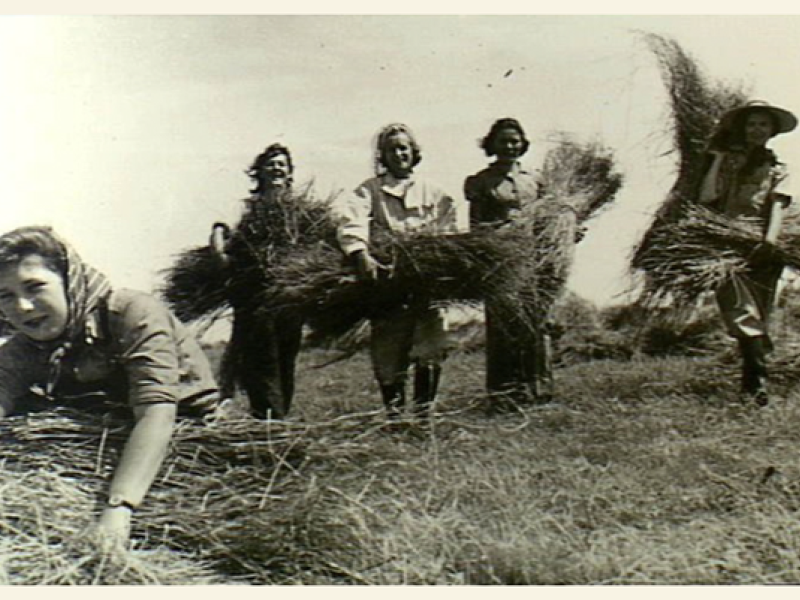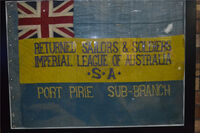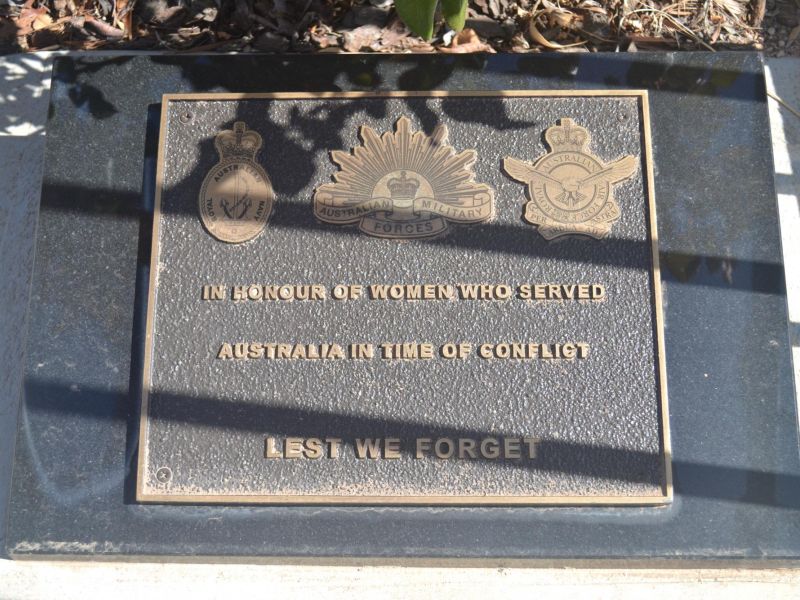Flax Workers - Australian Women’s Land Army
Linen Flax was an important agricultural product during World War 2. It was used to make coats and knapsacks, parachute harnesses, ropes, tents and tarpaulins, firehoses, and for use in munition works. With shipping disruption in 1939, Britain’s flax supply vanished and Australia increased its production to compensate. War broke out just as Australia prepared to sow 3,600 acres in 1940; this was quickly increased to 8,000 acres. For each subsequent year after 1940 until the end of the war, 70,000 acres were sown and harvested.
Four Commonwealth Flax Mills were built by the government in the country centres of Mt. Gambier, Morphett Vale, Auburn and Laura as were flax worker hostels. Hostels to accommodate Australian Women’s Land Army (AWLA) women were established at Mount Gambier in the south east, at Undalya south of Clare and Laura in the mid-north. It is thought that Kathleen Jane Kirchner born Wandearah East 10th August 1918 was a member of the Australian Women’s Land Army who worked in the flax industry.
Women worked in the flax industry for 12 months of the year in and around the mill or as flax spreaders in the fields. Special equipment in addition to the normal issue of clothing, was allotted to flax workers including a khaki drill boiler suit, knee length gum boots, an oilskin coat, and leather or rubber gauntlet gloves. Flax required a great deal of handling and was very hard on the clothes and the hands, making gloves necessary.
Commonly known as the "flax sheilas" they turned out from their quarters each morning clutching their bread 'n fritz lunches, clad in their special attire with an assortment of woollies and waterproofs of many colours and shapes — anything that kept out the cold. A work day usually began at 7:30 am and finished at 5:00 pm with 10-minute breaks for morning and afternoon tea.
The flax was cut and stacked in summer like any other hay, and in winter it was spread out evenly in the paddocks again to be exposed to moisture; known at retting. Spreading meant continual stooping and made for back breaking work particularly for the first week. The clean, yellow straw was spread in a thin layer, in neat rows for six to eight weeks until it weathered to a grey brown colour before being turned over with special jarrah poles.
When it was time to gather the flax, small bundles were arranged in a wigwam style known as ‘gaiters’ thus allowing the wind to blow through and dry it thoroughly. They were then tied into sheaves, eventually forming stacks which was then carted to the mill and stacked until the mill was ready to tease the fibre from the weakened straw.
It required about twenty tons of flax to produce one ton of fibre, the very finest first-grade fibre being valued at £900 a ton.
- Day in Life of Flax Worker http://nla.gov.au/nla.news-article54899405
- Australian Womens Land Army - South Australia - General https://recordsearch.naa.gov.au/SearchNRetrieve/Interface/ViewImage.aspx?B=3209…
- Australian War Memorial https://www.awm.gov.au/collection/C293485

 RSL (Port Pirie Sub Branch) Inc.
RSL (Port Pirie Sub Branch) Inc.